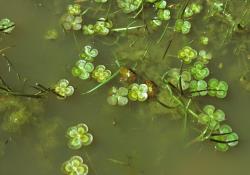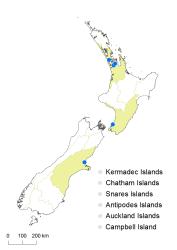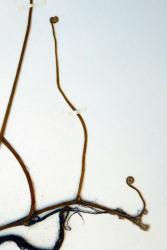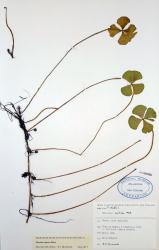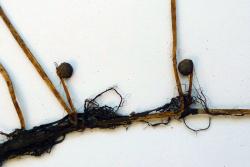Aquatic fern. Rhizomes submerged, long-creeping, 1–2 mm in diameter, rooting at nodes, straw-coloured, bearing colourless septate hairs up to 2 mm long near the apex. Leaves solitary at each node, 90–330 mm long, glabrous; stalks 70–300 mm long, each terminating in 4 flabellate segments; segments broadly obovate to flabellate, 10–38 mm long, 9–38 mm wide, green or sometimes streaked brown with false veins between the true veins on the underside; distal margin rounded, entire. Sporocarps solitary, almost globose, each 4–5 mm long, glabrous, on unbranched stalks 3–15 mm long.
Marsilea mutica is a distinctive plant whose creeping rhizomes root on the bottom of ponds or standing water, and produce 4-lobed leaves on long stalks that float on the surface of the water. In New Zealand the leaves are uniformly green, or with streaks of brown running between the veins, but in Australia they often have horizontal brown markings. Sporocarps are usually produced as the habitat dries out.
North Island: Auckland, Southern North Island
South Island: Canterbury
Altitudinal range: 5–140 m.
An Australian and New Caledonian species commonly grown in aquaria and garden ponds, and known to have become established temporarily in four North Island localities, the Waitākere Ranges, Hūnua, Pukekohe and Paekakariki, and one South Island locality near Kaiapoi, Canterbury.
Recorded from farm ponds, standing water and swampy ground, sometimes growing with Callitriche stagnalis, Lemna sp., and Azolla rubra, or in Juncus articulatus turf.
Brownsey (1988, p. 27). Voucher: WELT P013485, P020044, 1986.
Marsilea mutica is considered potentially poisonous to horses, cattle and sheep in Australia because of the presence of thiaminase (McKenzie 2012). However, the species is too sporadic to cause any problem in New Zealand.



